Imbolc: An Ode to the Quickening
The skies might be stormy, the earth icy, but Imbolc whispers – we're almost there.
Imbolc greetings, witches! How are you honoring your creative fires on Brigid’s Day?
If you’re doing it by casting spells and calling circles, we salute you. If you prefer to stay wrapped in winter’s blanket, light a candle, and explore the landscapes of your inner worlds, this is also a spell. Imbolc’s magick is subtle and sleepier than other sabbats like Samhain and Yule.
Yet, because Imbolc sits midway between the Winter Solstice and the Spring Equinox, it marks the unofficial start of Spring for agricultural communities. The skies might be stormy, the earth icy, but Imbolc whispers – we're almost there.
However, Imbolc doesn't suggest we throw caution to the wind and ignore the lessons of winter. Think again. Until our springtime heroine returns and the hare emerges from her den, until the snowdrops give way to the crocus blossoms, the Winter Witch is still in charge. But, like a light at the end of the tunnel, Imbolc is a spark. It’s an awakening. Imbolc is an invitation to follow the flickering candle to a new chapter of our story.
In folklore from Ireland, Scotland, and the British Isles, Imbolc foreshadows the annual battle between the Cailleach (the winter crone) and Brigid (the springtime maiden). The Cailleach is fierce, and she battles young Brigid with storm and spite, but eventually, the old woman grows weak. Just like the previous year and the year before, the spirit of winter forfeits her throne. The Cailleach doesn't wallow or weep but instead, shapeshifts into an owl. She flies to the Green Isle, drinks from the Fountain of Youth, and settles in for some much-needed rest.
With the Cailleach finally gone, Brigid takes hold of the seasonal wheel. She sweeps out the shadowy corners, plants snowdrops at the threshold, and offers a glimpse of what's to come — early spring flowers, heart-shaped ambition, and the warmth we crave.
A painting of Saint Brigid in St. Patrick's Chapel, Glastonbury
In this story, the Cailleach plays the villain, and Brigid is our heroine, but on closer inspection, these enemies are actually two sides of the same coin. Together, the Cailleach and Brigid personify our dualities, our transformations, and our relationship to earth’s timeworn, seasonal rhythms. The goddesses ask that we recognize and learn from inner and outer metamorphosis.
“You can cut all the flowers but you cannot keep Spring from coming.” ― Pablo Neruda
Brigid is a goddess of creativity and the forge. She also goes by Bride, St. Briget, or Our Lady of the Shores. Depending on who we ask, her name translates to “Fiery Arrow,” “Exalted,” or “The Bright One.” Sometimes, Brigid manifests not as a young woman but as a swan.
Like her wintery counterpart, Brigid is ancient, and her origin is mysterious. If we follow her roots, they spiral, split, and intersect with the realms of shapeshifters and fairies. In Irish fairy tales, Brigid is part of the Tuatha Dé Danann and a goddess of healing, motherhood, and holy wells. She is also a spirit of fire, one who maintains our creative flame. She is a poetess who protects women, artists, and people who care for livestock, especially sheep.
The name Imbolc (also known as Imbolg or Oimelc) loosely translates to “milking” or “in the belly,” a reference to the pregnant ewes and the lambs about to be born. For our ancestors, lambing season promised fresh milk during the most challenging months of the year. Come January and February, the rain is busy turning the earth to mud, the winds still howl, and our last harvest season is a distant memory. Except for late winter blooms like Camellias and Snowdrops, the plant world is still tucked away in its soil bed.
That’s why the magick of Imbolc is a stirring, a sleepy spell, a quickening that’s felt but not always seen. Imbolc is a candle dancing in the window, a threshold that blooms with the first flowers. Brigid arrives when we need her the most – we're almost there.
St Brigid being carried away by angels, John Duncan, 1913
Happy Brigid’s Day, Literary Coven! What sparks or fiery arrows foreshadow the arrival of spring in your corner of the world? Leave a comment and add their stories to our seasonal altar.

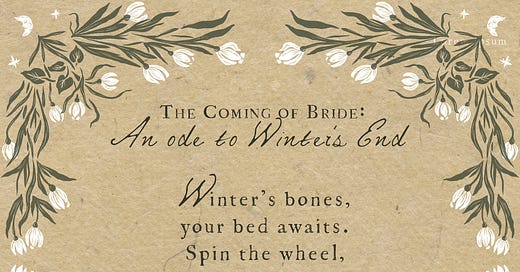


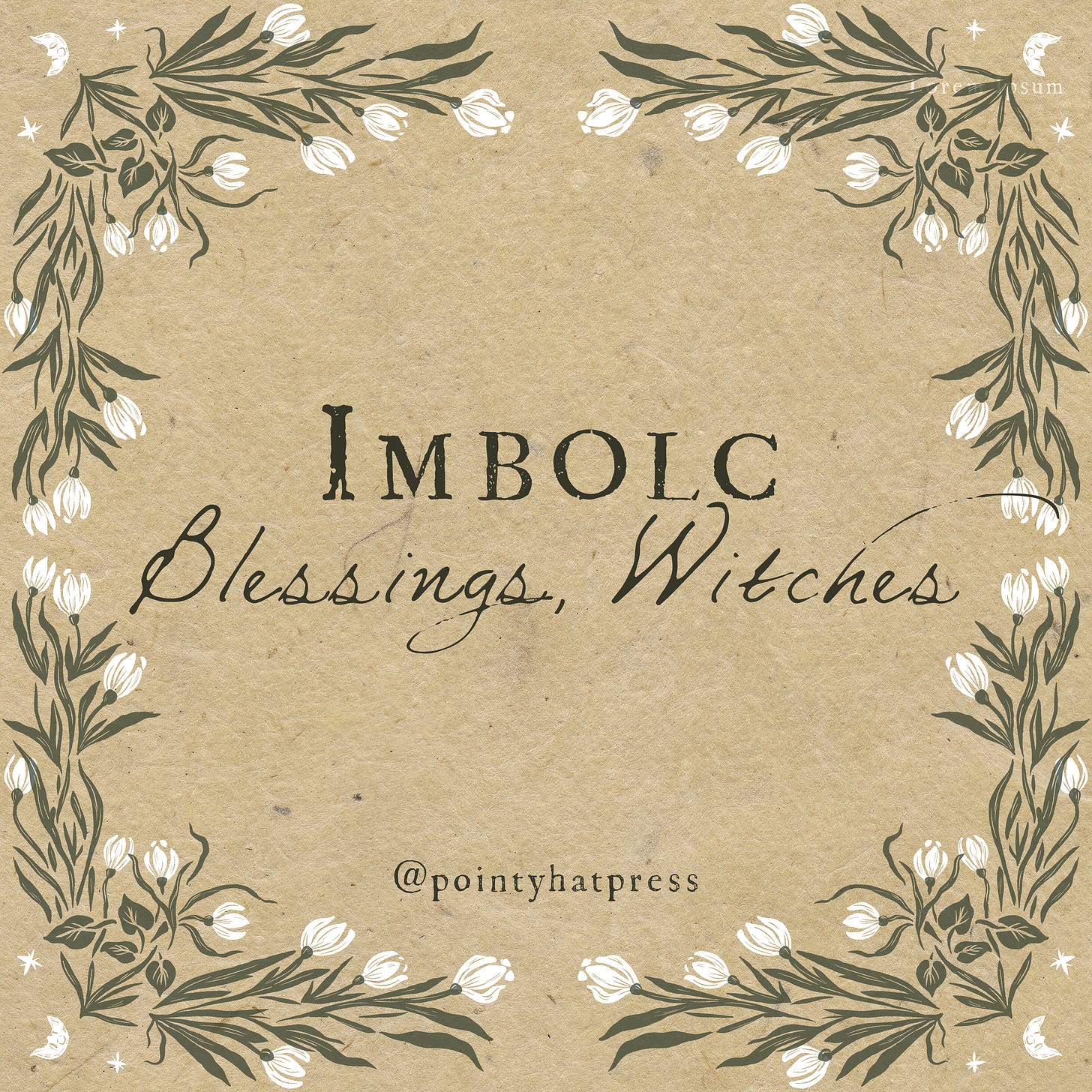

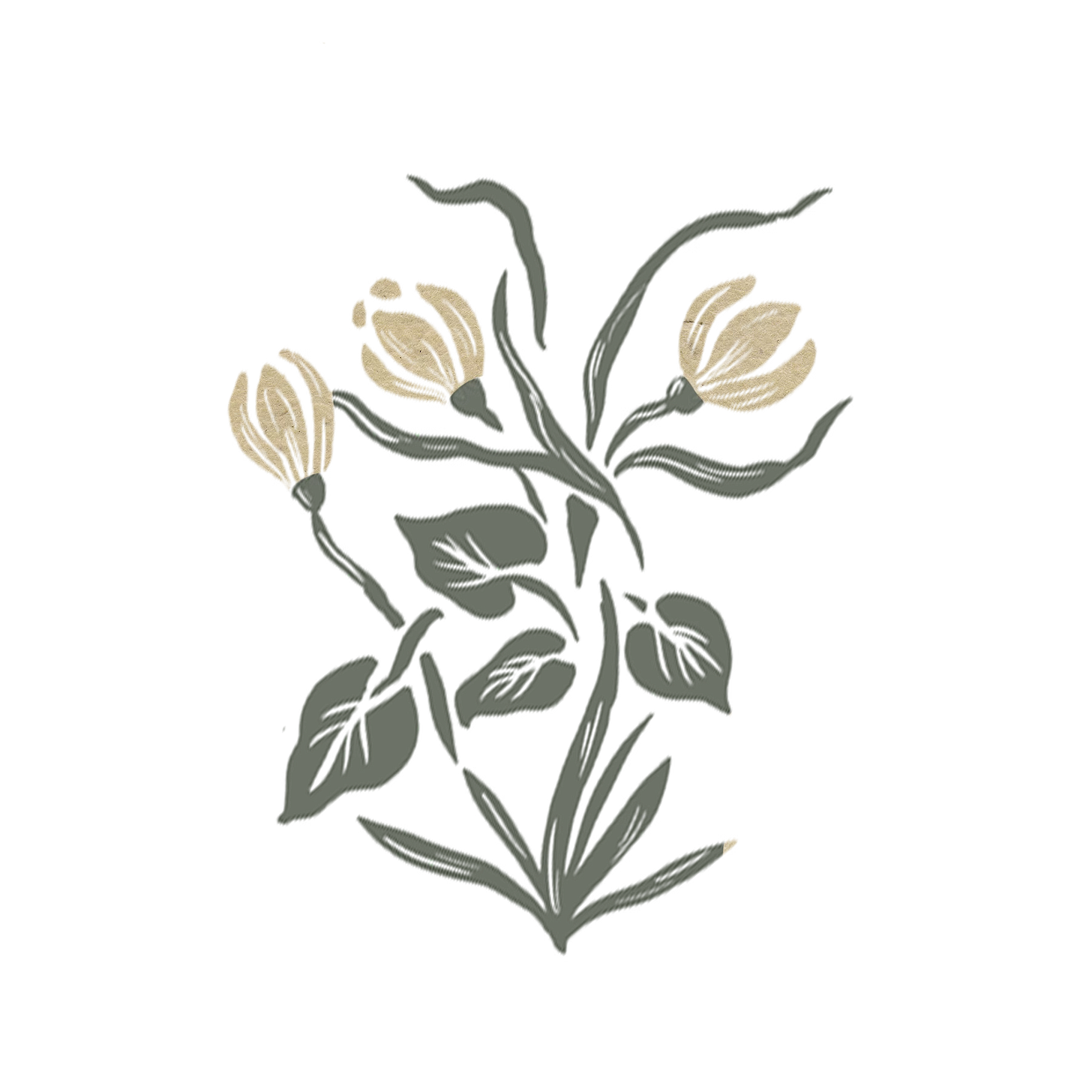
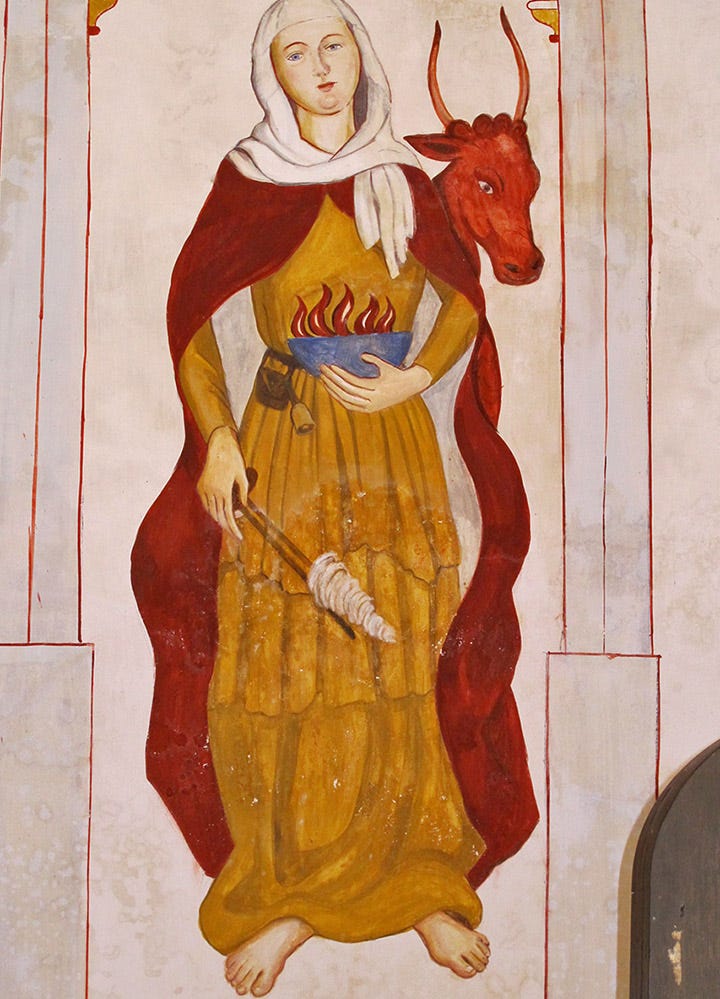
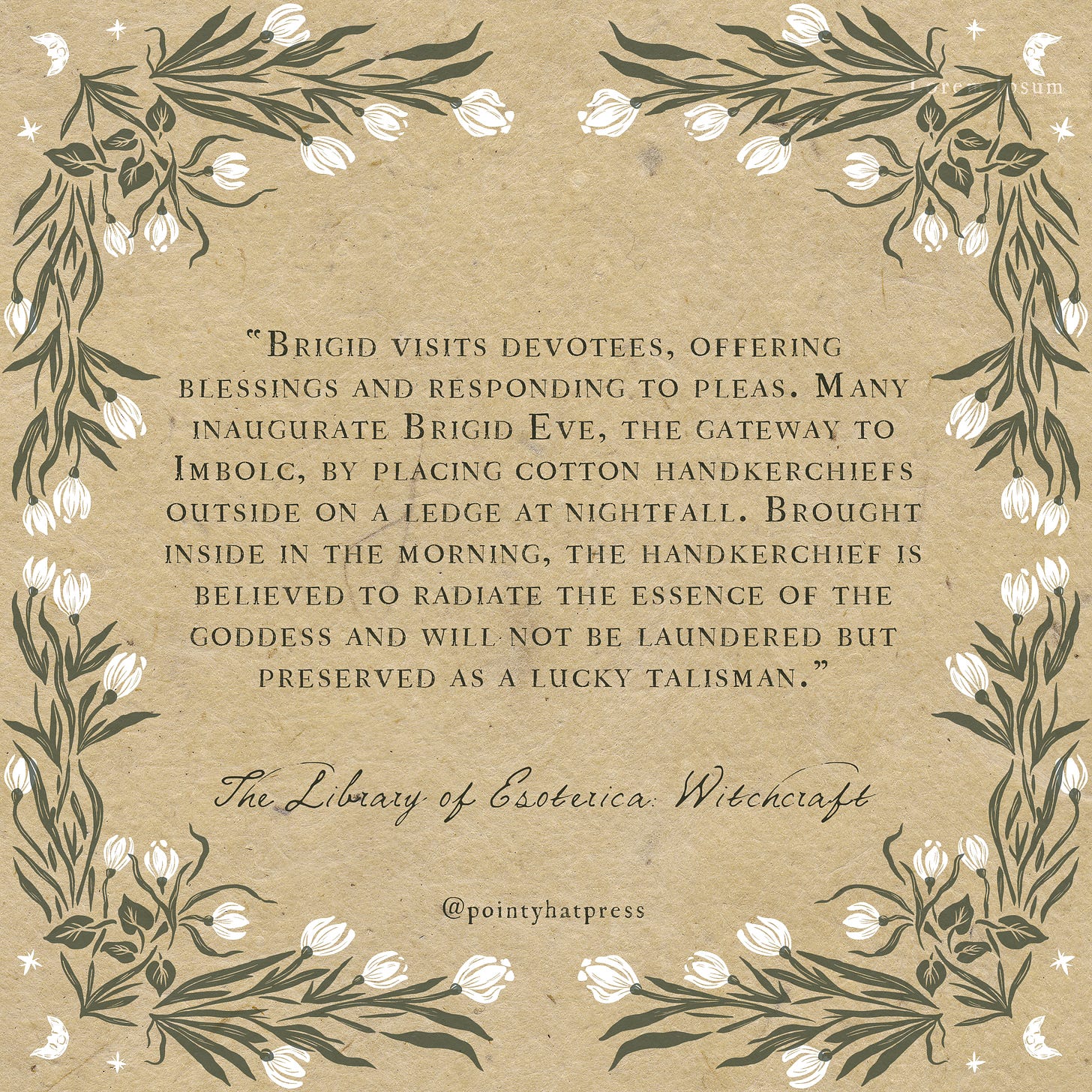

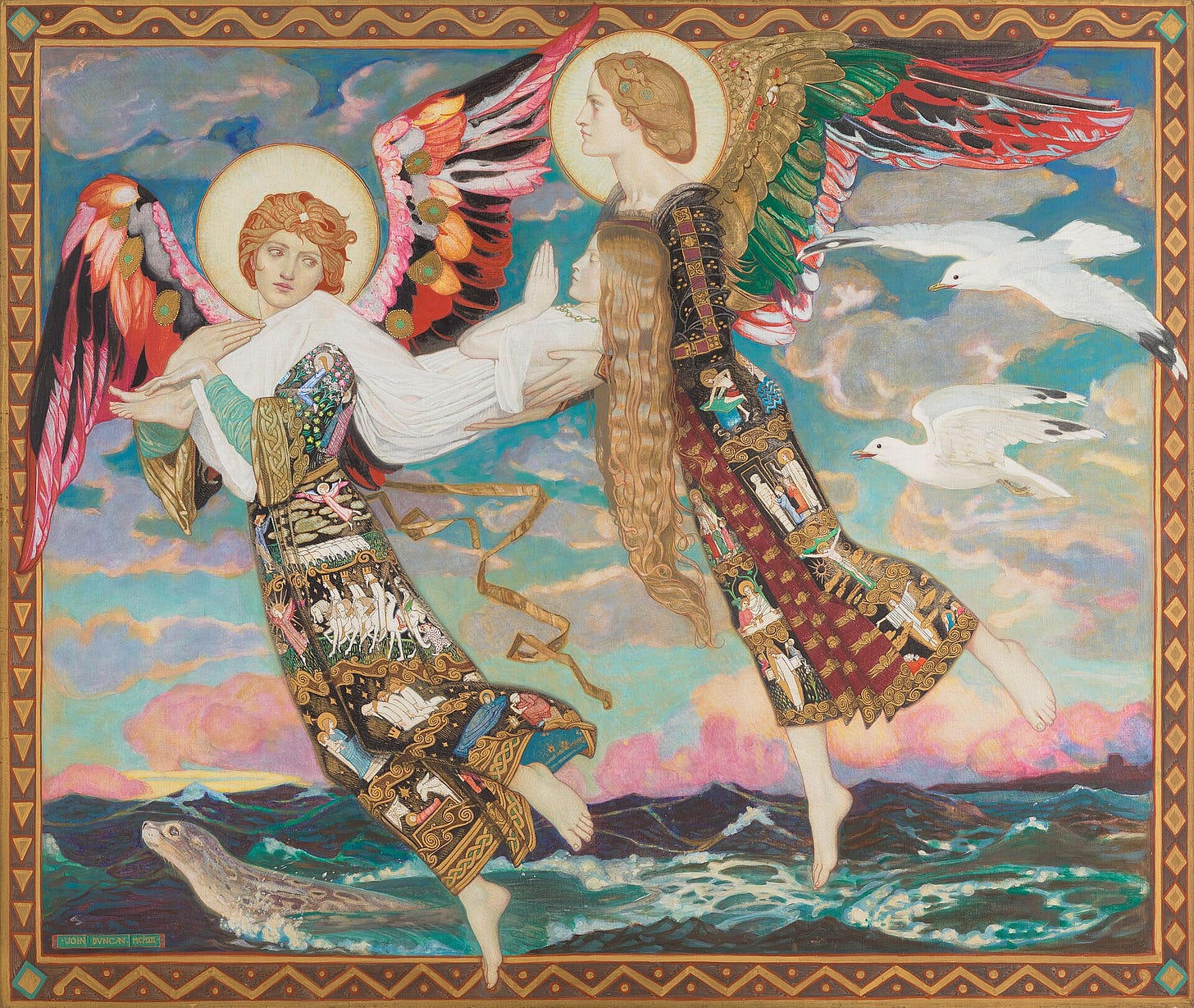



"But, like a light at the end of the tunnel, Imbolc is a spark. It’s an awakening. Imbolc is an invitation to follow the flickering candle to a new chapter of our story."
I love this write-up, witches, and I look forward to Brigid's full return. She calls upon us to create, and create we shall, especially as we (im)patiently await the arrival of spring's grandeur.
Here, the primroses are awake too early, but the catkins are right on time. The sun is bright today, almost too bright, but it would be after all the storms recently...